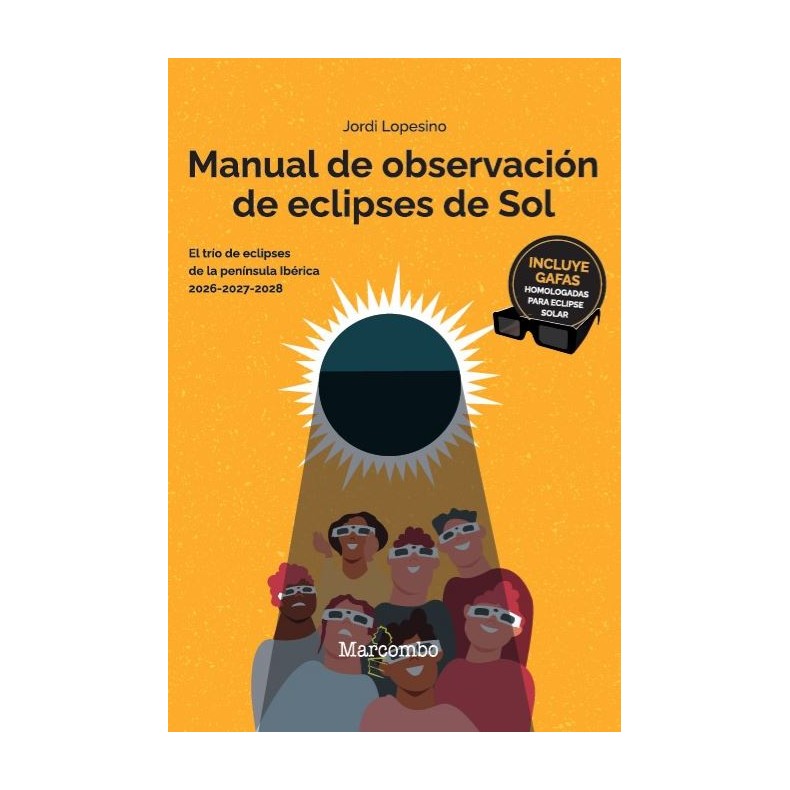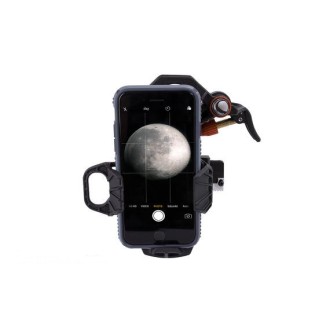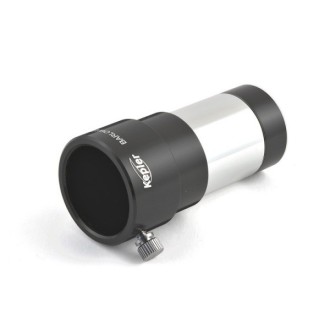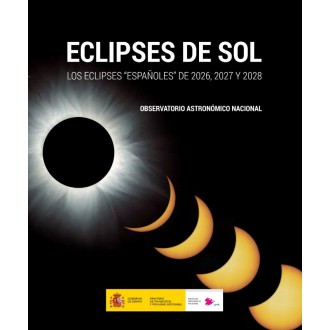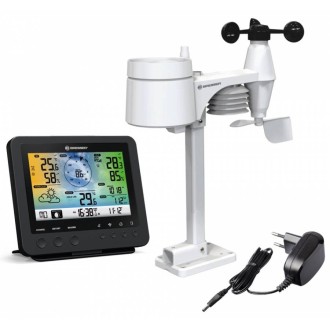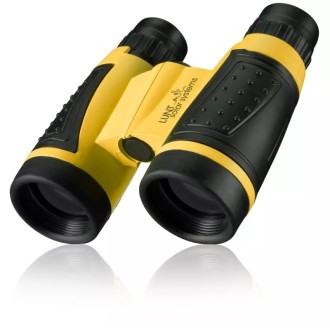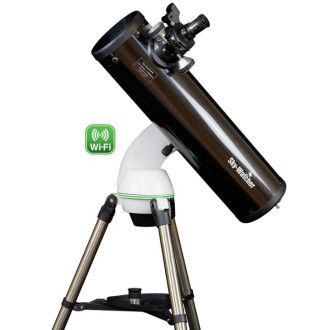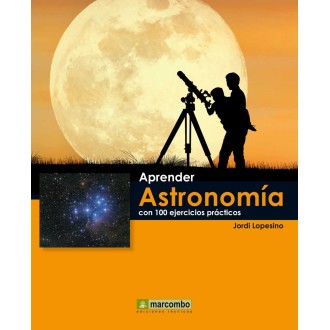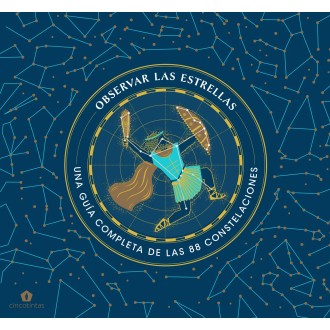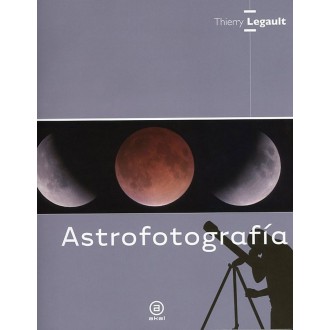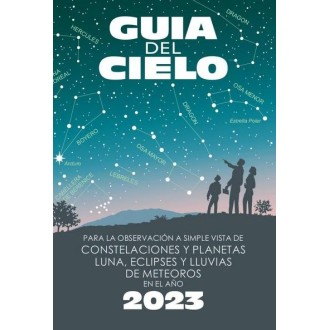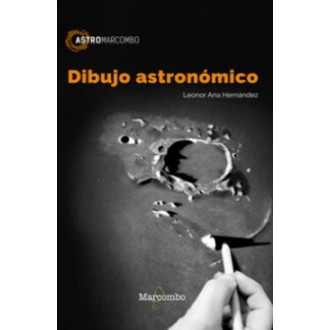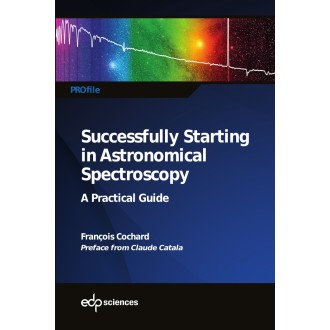Deliver it 9/18 days
Manual de observación de eclipses solares Editorial Marcombo Spanish Edition
The most awaited trio of eclipses in the Iberian Peninsula arrives in 2026, 2027 and 2028! Very soon, in our country, we will be lucky enough to see three solar eclipses: two total eclipses and one annular eclipse. All three will leave their shadow trail across the Iberian Peninsula from one end to the other
| Carrier | Description | Estimated Delivery | ||
|---|---|---|---|---|
 |
Home delivery - International | Home delivery - International |
Monday, 22 December - Wednesday, 31 December |
|

Home delivery - International
Home delivery - International
Estimated delivery:
Monday, 22 December - Wednesday, 31 December
Solar eclipse observation manual - Jordi Lopesino
The essential book to enjoy the solar eclipses of 2026, 2027 and 2028
With Telescopiomania - and free solar observation glasses!
we are in luck! The sky has prepared for us three years in a row of authentic cosmic spectacle:
Total solar eclipse in 2026, visible from the Iberian Peninsula.
Total solar eclipse in 2027, another historic event without leaving the country.
And in 2028, an annular solar eclipse that will cross Spain from end to end.
It is no longer necessary to travel thousands of kilometers to enjoy a solar eclipse: they are right here, just around the corner! It is the perfect time to get ready and live an unrepeatable astronomical experience.
Everything you need to know to observe a solar eclipse safely
still don't know how to observe a solar eclipse? Don't worry. The new book "Manual de observación de eclipses de Sol" by Jordi Lopesino explains it step by step.
It is a practical and clear guide, ideal for both beginners and astronomy enthusiasts, with all the information you need to experience this phenomenon with safety and excitement:
Where and when to see the eclipses of 2026, 2027 and 2028.
How to protect your eyesight with approved solar observation glasses.
Which telescopes, filters and cameras to use.
And how to capture spectacular images of one of the most fascinating natural phenomena on the planet.
The book is written in an approachable and passionate tone, designed for those who want to discover the magic of eclipses and understand what really happens when the Moon covers the Sun.
Free solar observation glasses
With the purchase of the Solar eclipse observation manual, we give you official Astrosolar solar eclipse glasses, like these 👉 Astrosolar solar eclipse glasses
These approved glasses will allow you to look at the Sun in complete safety and enjoy every second of these unique events.
Telescopiomania: your trusted astronomy store
In Telescopiomania you will find all the material and technical advice you need to enjoy eclipses to the fullest: solar filters, telescopes, cameras, accessories and much more.
Whether you are a beginner or an expert, we will help you turn this astronomical experience into an unforgettable memory.
don't miss this opportunity!
Buy now Jordi Lopesino's Solar Eclipse Observation Manual with Telescopiomania and get ready to live, understand and photograph the most impressive solar eclipses of the decade.
Available now with free solar observation glasses.
you can't miss it!
Index
TABLE OF CONTENTS INTRODUCTION
The Nearest Universe
1. ANCIENT COSMOLOGY
1.1 India
1.2 China
1.3 Ancient Egypt
1.4 Classical Greece
1.5 Mayan
1.6 Renaissance
1.7 Back to the present
2. MAIN ACTORS OF AN ECLIPSE
2.1 The Earth
2.2 The Moon
2.3 The Sun
3. HOW A TOTAL SOLAR ECLIPSE WORKS
3.1 Phases of an eclipse
3.2 Other outstanding phenomena in a total eclipse of the Sun
3.3 Where does the Moon enter an eclipse?
3.4 Duration of a solar eclipse
4. TOOLS TO MEASURE THE SKY
5. HOW TO OBSERVE THE SUN SAFELY
5.1 Observation with binoculars 5.2 Solar Projector
5.3 Telescope 5.4 Motorized altazimuth mount
5.5 German equatorial mount
5.6 Special optics for observing the Sun
6. PHOTOGRAPHING THE ECLIPSE
6.1 With cell phone
6.2 Telescope and DSLR camera
6.3 Photography with telescope and CMOS type planetary cameras
7. ECLIPSE PLANNING
7.1 How to choose a good place to observe it
7.2 Securing a good observing site
7.3 Calculating the position of the Sun per day
8. SAROS CYCLE
9. TRIO OF ECLIPSES
9.1 Total solar eclipse, August 12, 2026
9.2 Total solar eclipse, August 2, 2027
9.3 Annular solar eclipse, January 26, 2028
10. ECLIPSE CHASERS
CONCLUSIONS
ANNEX Lunar Eclipses
ACKNOWLEDGMENTS
Language:
Spanish
Date of publication
06/11/2025
Country:
Spain
ISBN:
9788426740823
Binding type:
Softcover
Dimensions
15x21
Pages:
100

